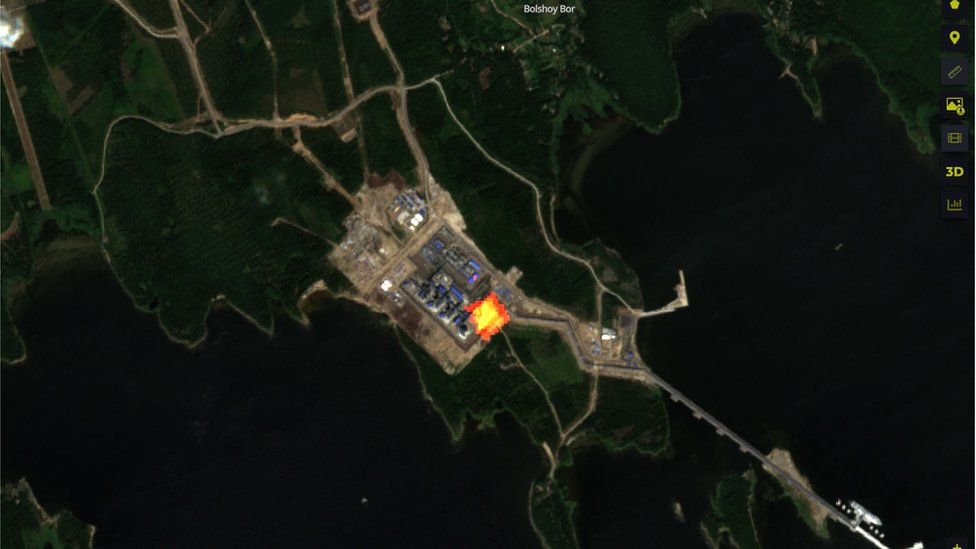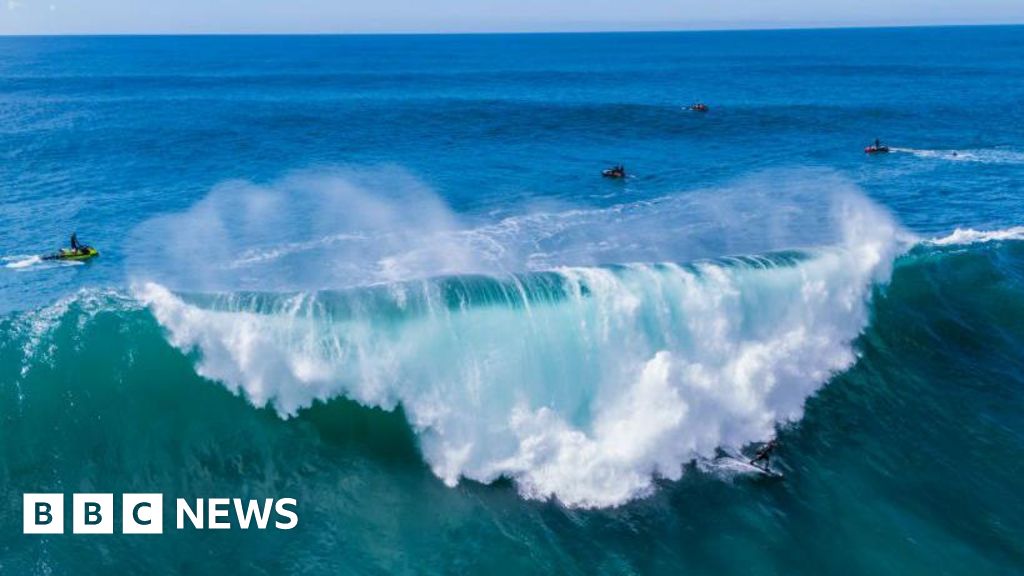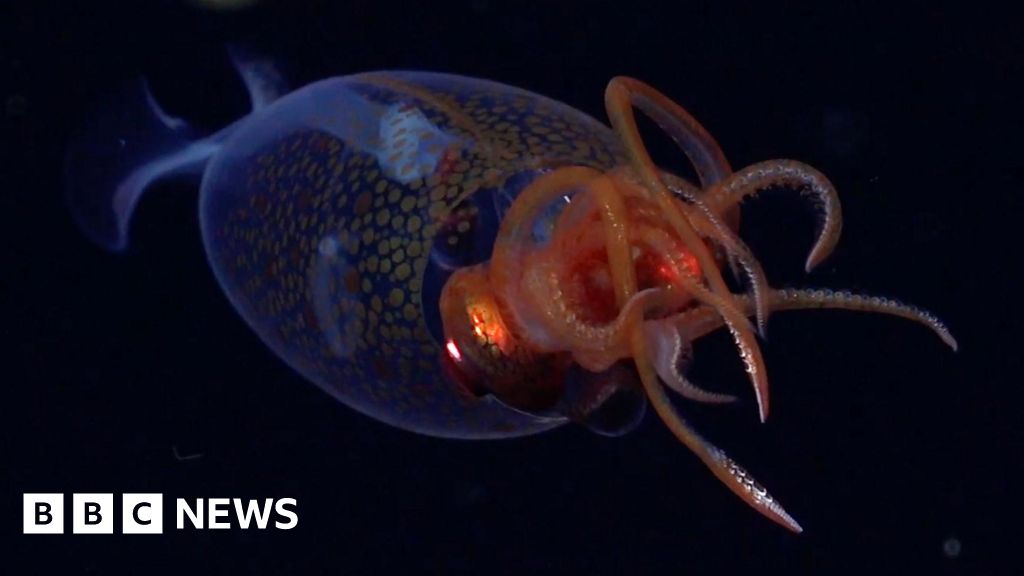ARTICLE AD BOX
By Matt McGrath
Environment correspondent
 Image source, Copernicus Sentinel/Sentinel Hub/Pierre Markuse
Image source, Copernicus Sentinel/Sentinel Hub/Pierre Markuse
A colourised version of this satellite image captures infrared radiation from the burning of gas at the Portovaya plant
As Europe's energy costs skyrocket, Russia is burning off large amounts of natural gas, according to analysis shared with BBC News.
Experts say that the gas would previously have been exported to Germany.
They say the plant, which is near the border with Finland, is burning an estimated $10m (£8.4m) worth of gas every day.
Scientists are also worried that soot from the burn will impact Arctic ice.
The analysis by Rystad Energy indicates that around 4.34 million cubic metres of gas are being burned by the flare every day.
It's coming from a new liquified natural gas (LNG) plant at Portovaya, north-west of St Petersburg. The first signs that something was awry came from Finnish citizens over the nearby border who spotted a large flame on the horizon earlier this summer.
Portovaya is located close to a compressor station at the start of the Nordstream 1 pipeline which carries gas under the sea to Germany.
Supplies through the pipeline has been curtailed since mid-July, with the Russians blaming technical issues for the restriction. Germany says it was purely a political move following Russia's invasion of Ukraine.
But since June, researchers have noted a significant increase in heat emanating from the facility thought to be from burning gas.
Gas flaring is the burning of natural gas. While it is common at processing plants - normally done for technical or safety reasons - the scale of this burn has confounded experts.
"I've never seen an LNG plant flare so much," said Dr Jessica McCarty, an expert on satellite data from Miami University in Ohio.
"Starting around June, we saw this huge peak, and it just didn't go away. It's stayed very anomalously high."
Image source, Ari Laine
Image caption,This photo was taken by Finnish citizen Ari Laine on 24 July at a distance of around 38km from the Portovaya facility
Mark Davis is the CEO of Capterio, a company that's involved in finding solutions to gas flaring.
He says the flaring is not accidental and it's more likely a deliberate decision made for operational reasons.
"Operators often are very hesitant to actually shutdown facilities for fear that they may be technically difficult or costly to start up again, and it's probably the case here," he told BBC News.
Others believe that there could be technical challenges in dealing with the large volumes of gas that were being supplied to the Nordstream pipeline.
Russian energy company Gazprom may have intended to use that gas to make LNG at the new plant, but may have had problems handling it and the safest option is to flare it off.
It could also be the result of Europe's trade embargo with Russia in response to the invasion of Ukraine.
"This kind of long-term flaring may mean that they are missing some equipment," said Esa Vakkilainen, an energy engineering professor from Finland's LUT University.
"So, because of the trade embargo with Russia, they are not able to make the high-quality valves needed in oil and gas processing. So maybe there's some valves broken and they can't get them replaced."
Gazprom has not responded to requests for comment on the flaring.
The financial and environmental costs mount each day the flare continues to burn, say scientists.
"While the exact reasons for the flaring are unknown, the volumes, emissions and location of the flare are a visible reminder of Russia's dominance in Europe's energy markets," said Sindre Knutsson from Rystad Energy.
"There could not be a clearer signal - Russia can bring energy prices down tomorrow. This is gas that would otherwise have been exported via Nordstream 1 or alternatives."
Image source, Elmeri Rasi
Image caption,The smoke and orange light from the gas flare at Portovaya is seen on the left of this image captured by holidaymaker Elmeri Rasi
The environmental impacts of the burning are worrying scientists.
According to researchers, flaring is far better than simply venting the methane which is the key ingredient in the gas, and is a very powerful climate warming agent.
Russia has a track record of burning off gas - according to the World Bank, it's the number one country when it comes to the volume of flaring.
But as well a releasing around 9,000 tonnes of CO2 equivalent every day from this flare, the burning causes other significant issues.
Black carbon is the name given to the sooty particles that are produced through the incomplete burning of fuels like natural gas.
"Of particular concern with flaring at Arctic latitudes is the transport of emitted black carbon northward where it deposits on snow and ice and significantly accelerates melting," said Prof Matthew Johnson, from Carleton University in Canada.
"Some highly cited estimates already put flaring as the dominant source of black carbon deposition in the Arctic and any increases in flaring in this region are especially unwelcome."
Follow Matt on Twitter @mattmcgrathbbc.
Image source, Copernicus Sentinel/Sentinel Hub/Pierre Markuse
Image caption,A colourised view of the Portovaya LNG plant from 28 June - the satellite image captures infrared radiation not flames

 2 years ago
38
2 years ago
38








 English (US) ·
English (US) ·